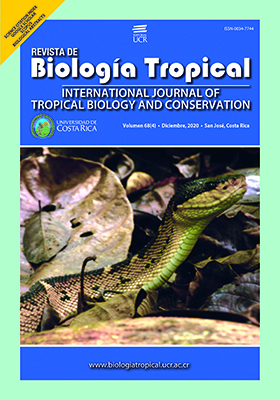Abstract
Introduction: Benthos is an efficient indicator of environmental disturbances, biodiversity and trophic dynamics. In Cuba, benthic mollusks have been reported as the main food for the lobster Panulirus argus. Objectives: To estimate spatio-temporal variations in the soft-bottom benthic community of the Gulf of Batabanó, and to infer, with emphasis on mollusks, the effect of such variations on the availability of food for spiny lobsters. Methods: A historical analysis of the variations in the density and biomass of megazoobenthos (organisms ≥ 4 mm) and particularly of megazoobenthic mollusks was carried out, taking as a reference the studies published in 1990 (with samples from 1983) and recent data (2007-2018) recorded on site using comparable methodologies based on sediment drags. Abundance was given as density (ind/m2) and biomass in g/m2. Results: It was found that both the density and the biomass were significantly higher at the end of the last century and show a tendency to gradually decrease towards recent times. Regarding the values reported in 1983, the density of organisms showed a decrease of 73 %, however, the biomass experienced an even greater decrease (86 %). The areas with the highest density and biomass, both benthos and mollusks, have varied from 1983 and are currently located towards the center of the gulf. Despite this, bivalves continue to be better represented than gastropods. In general, mollusks showed a significant decrease (55 % and 88 % respectively). Conclusions: The deterioration of the benthic community in the fishing areas of the Gulf of Batabanó was corroborated and it was demonstrated, based on megazoobenthos, that malacofauna can be used as a reliable indicator of the general parameters of the soft-bottom benthic community. The availability of food for lobsters have decreased 55.6 % compared to 1983. This could help to explain the current changes in the abundance, distribution and nutritional condition of lobsters, which could also be related to the recent megazoobenthos variations.
##plugins.facebook.comentarios##

This work is licensed under a Creative Commons Attribution 4.0 International License.
Copyright (c) 2020 Alexander Lopezegui Castillo, Diana Martínez Coello







